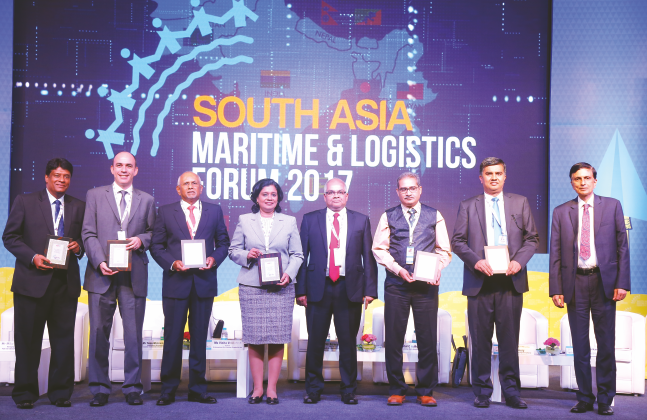[vc_row][vc_column][vc_column_text]
By 2025, trade in ASEAN will grow to $200 billion and the ports need to gear up accordingly to ensure efficient movement of cargo among countries in the Bay of Bengal
Port and terminals operators from India, Bangladesh and Sri Lanka came together to deliberate on improving capacity utilisation of ports, locating the cargo and fostering holistic development in the industry. On the outset, Vinita Venkatesh, Director, Krishnapatnam Port Container Terminal voiced the need to improve capacity utilisation on the east coast. The east coast has a capacity of 600 million teu while the current capacity utilisation is only 300 million teu. The need of the hour is to bring the port sector as a whole into perspective rather than talking individually about public and private ports, she said. Shippers need to identify the cargo centres and move the cargo through ports that are both cost and time efficient.
Taking the discussion forward on holistic development of ports, Upul Jayatissa, Chief Manager, Marketing and Business Development, Sri Lanka Port Authority, brought to the fore the developments at Colombo Port. The port has boosted its infrastructure to service 22,000 teu ships. Growing at the rate of six per cent it has recorded business of $6 million this year. The port is further expanding capacity with the development of the East Container Terminal. “We need to look at the ports as industry irrespective of ownership and bring out the areas where public and private ports can collaborate,” averred Atul C Kulkarni, Advisor, Indian Ports Association. The government needs to chalk out the areas where it can help private ports, such as by improving last mile connectivity. All decisions should be port centric and not public or private port related. Indian port developers should also identify Kaladan project.
Mike Formoso, Managing Director, PSA International Pvt Ltd India, referred to growing size of vessels that is putting pressure on port infrastructure. Coping up with this trend, Bharat Mumbai Container Terminal (BMCT) will increase its capacity from 1million to 4.8 million teu by 2022. It has 1km continuous berth and all cranes are 22 rows wide. He gave a clarion call for deregulation of tariffs, creation of level playing field and abolition of TAMP.
The session moderator, SN Srikanth, Founder & Sr Partner, Hauer Associates Maritime & Port Consultants, invited the views of Romesh David, CEO, South Asia Gateway Terminal, on whether Colombo can rely on India for transhipment if TAMP is abolished? To which Romesh replied, “Colombo will develop on the back of India’s growth and not lack of India’s growth.” The cargo will always choose the easiest and optimal route. By 2025, trade in ASEAN will grow to $200 billion and the ports need to gear up accordingly.
Ahamedul Karim Chowdhury, Terminal Manager, Chittagong Port Authority, suggested for promoting direct container trade with east coast of India. Indian NVOCCs carrying empties form Pangaon to Kolkata is increasing the cost for shippers. Freight rate rationalisation by mainlines is required.
Tissa Wickramasinghe, Chief Business Development Officer, Colombo International Container Terminal, announced that his port is getting ready to service ultra large carriers. The port development was completed in 28 months and in the first year it recorded business of more than 1million teu, most of which came from India.
[/vc_column_text][/vc_column][/vc_row]







